As an Amazon Associate I earn from qualifying purchases.
Many cultures make some sort of coconut curry chicken, but when I hear those words, I immediately translate them in my mind to kuku wa nazi.
Huh? Yeah, that’s Swahili for, more or less, coconut curry chicken. Kuku, as you might be able to guess, means chicken, and nazi — pronounced more like “NAH-see” and less like evil Germans — means coconut.
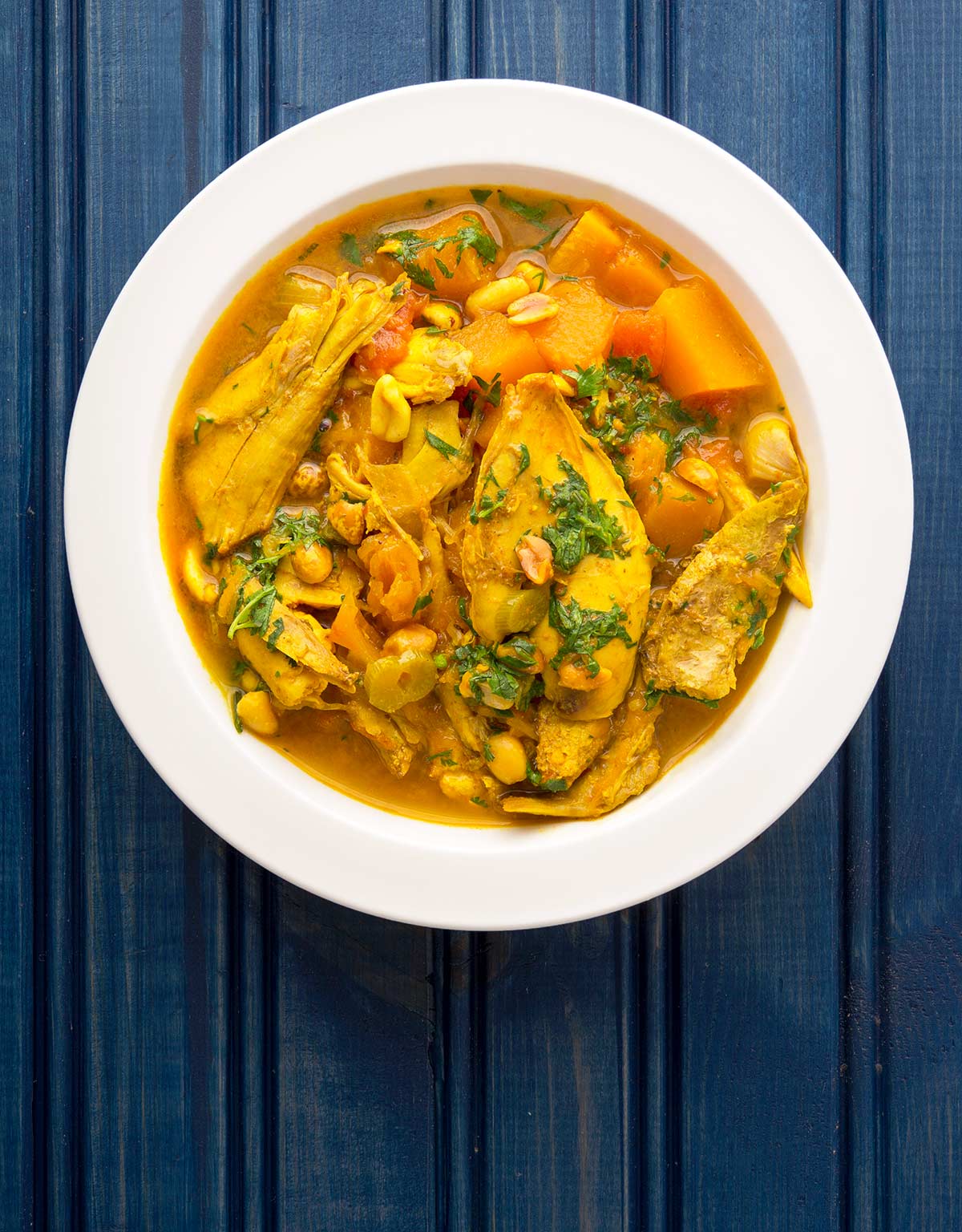
I know this because, it seems like a lifetime ago, I was a graduate student at the University of Wisconsin studying East Africa. And, as in many advanced programs, to graduate you must learn a language relevant to your study. Ergo Swahili, which is spoken from Somalia down to Mozambique.
This recipe is Kenyan, although there are similar versions all over East Africa. We had a professor, whose name escapes me (it was nearly 30 years ago, after all), who made this for us often. Rich, creamy, exotic spicy, as well as hot if you like it that way, and also filling.
As a graduate student, I made very little money, and chicken backs, necks, wings and drumsticks were all I could really afford when it came to meat, other than the occasional goat neck or oxtail; yeah, back then oxtail was a trash cut. Go figure. And this coconut curry chicken works very well with the lesser parts of a chicken.
Nowadays I rarely buy meat, but I do hunt pheasants and other upland game birds. As it happens, a pheasant is an almost perfect representation of the chickens I ate when I was in Africa. No fat fryers there. Nope. The African chickens I encountered worked for a living, often for years, before they became kuku wa nazi or any number of other dishes. So made my curry with pheasant.
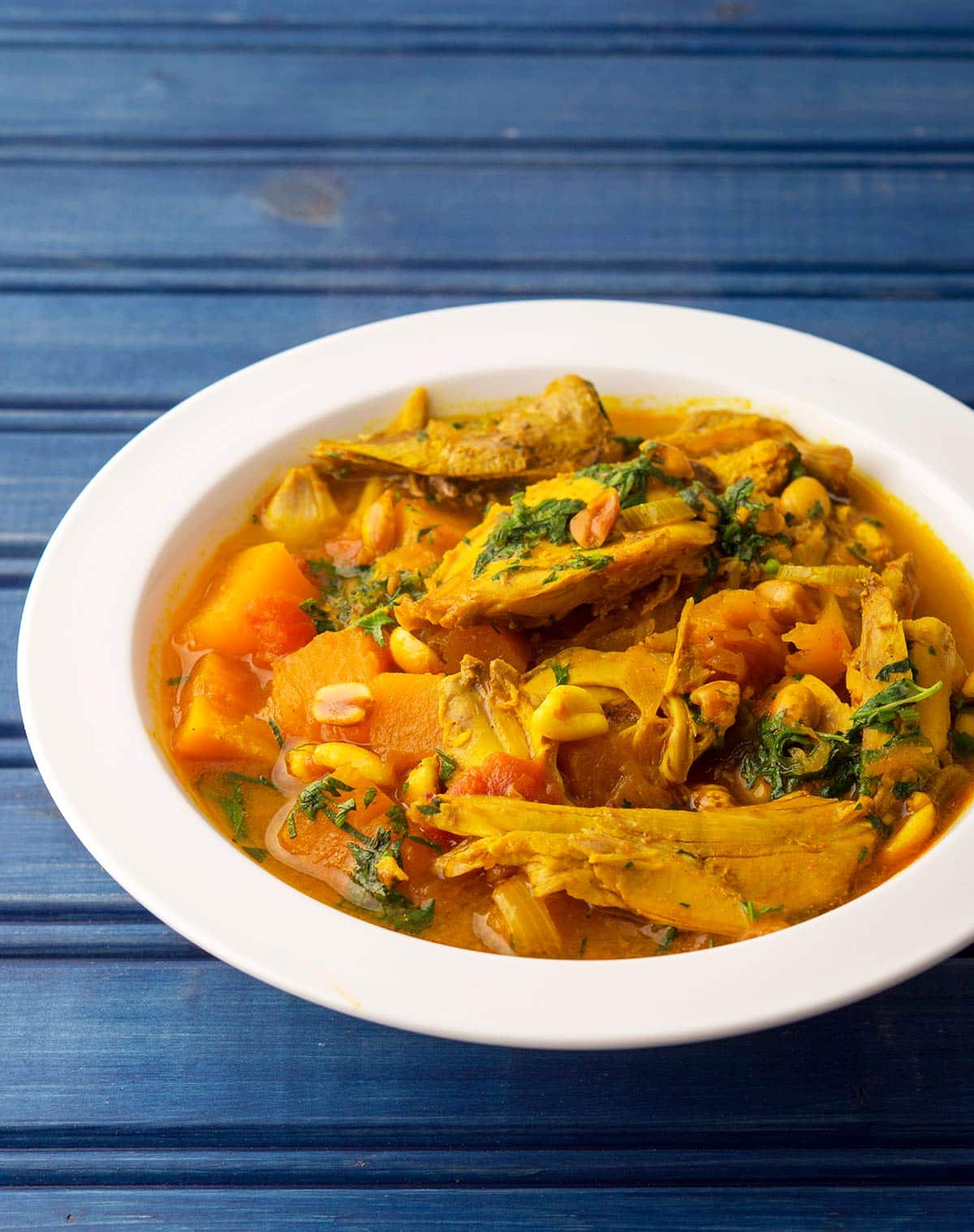
Chukars, partridges, ruffed grouse, blue grouse are all great alternatives, as is rabbit. In fact, if you have my cookbook Pheasant, Quail, Cottontail, you will see a version of this dish called African Rabbit Curry, or, to be precise, sunguru wa nazi.
The procedure is pretty simple. Cook some onions and meat in a pot, add spices, cover with lots of water and coconut milk and simmer gently until the meat is reasonably tender. Then add your starch, cook until that’s tender, then finish with herbs and roasted nuts.
I like to fish out anything with bones in it to make the curry easier to eat, but they don’t do that in Kenya very often. Potatoes, squash or turnips are all good starches, and if you want, you can add some slices of hearts of palm, too.
You’ll want to eat your coconut curry chicken with, of course, coconut rice, which is wali wa nazi in Swahili. All it normally is is basmati rice cooked in half water (or coconut water) and half coconut milk.
Once made, this will keep in the fridge a week, and it freezes well.
I make a few other curries and curry-like dishes from East Africa and its environs, such as a fish stew inspired by one I had in Tanzania, a Goan crab curry from the other side of the Indian Ocean, not to mention the ton of Ethiopian recipes I make. If you like this curry, you might also like my recipes for a similar-tasting Jamaican curry shrimp, a Thai red coconut curry that works with lots of proteins, another Thai green curry for fish, or an Indian crab curry.
Coconut Curry Chicken
Ingredients
- 3 tablespoons coconut oil, clarified butter or vegetable oil
- 1 whole pheasant or chicken, cut into serving pieces
- Salt
- 2 yellow onions, sliced
- 4 cloves garlic, chopped
- 1 tablespoon minced fresh ginger
- 2 to 6 small, hot chiles such as Thai or Scotch bonnet, chopped
- 2 plum tomatoes, chopped
- 2 to 4 tablespoons curry powder
- 2 quarts coconut water or regular water
- 1 pound peeled butternut squash or potatoes, cut into chunks
- 1 14-ounce can coconut milk
- 1/4 cup lime juice
- 1/4 cup salted, roasted peanuts
- 1/4 cup chopped cilantro
Instructions
- In a large, lidded pot, heat the coconut oil over medium-high heat. When it's hot, brown the pheasant or chicken pieces, removing them as they brown to a plate. Salt the meat as it cooks.
- When all the meat has browned, add the sliced onion, some salt, and stir well. Saute the onion, stirring often, until it wilts and picks up a little browning on the edges. Just a little browning, though. Don't caramelize them.
- Mix in the garlic, ginger and chiles and let them cook for 1 minute. Add the tomatoes and curry powder and stir well. My advice is to add 2 tablespoons at first, then check the seasoning in a while. You can always add more.
- Pour in the coconut water (or regular water) and stir well. Return the pheasant to the pot. Bring to a simmer and add salt and curry powder as needed. Cover the pot and simmer gently until the drumsticks and wings are tender. If you want, fish out the meat and strip it from the bones and tendons, returning the meat to the pot.
- Add the butternut squash and coconut milk and simmer until the squash is tender, about 30 minutes or so.
- Finish with the peanuts, cilantro and lime juice. Serve with rice.
Nutrition
Nutrition information is automatically calculated, so should only be used as an approximation.
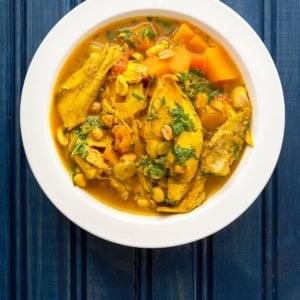
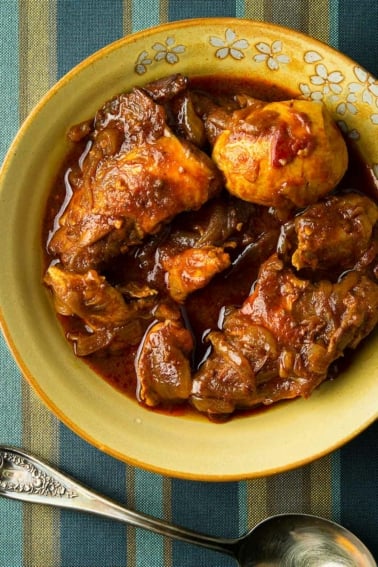

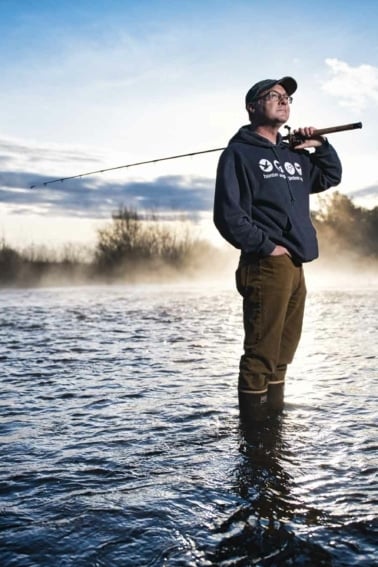

This recipe was excellent. First, just want to say thank you to Hank for your books and inspiration. Second, I made this using a dutch oven over a gas stove. Added to the recipe wild foraged chanterelle mushrooms, a green pepper from my garden, and a hint of cinnamon and fish sauce for added dimension. It made a LOT of food, so we shared a healthy portion with my older neighbor who loved it as well.
Made a double batch of this for my supper tonight (and plenty to freeze for when I can start entertaining again,) and thought I’d died and gone to Koh Phangan; you’ve outdone yourself with this one.
Used chicken thighs for a bit more flavor, raided my garden for some early termaters, and doubled down on the fresh ginger. Definitely recommend making your own curry powder to get the mix to your personal taste– this wonderful recipe deserves the extra effort– and used coconut creme instead of milk for a little more heft to the sauce (also, that was all I could find hiding out in the back of my pantry.)
Thank you THANK YOU, for this one, Hank. The quail and pheasant population running the back forty on my mountain better watch the (redacted) out, because come autumn, they’re soooo going into the pot.
JFTR: The local bunnies here in CA are apparently suffering through their own iteration of a pandemic virus right now with RHDV2 (https://www.cdfa.ca.gov/AHFSS/Animal_Health/RHD.html), or else I’d have them in my sights as well, but can definitely see how rabbit meat would lend itself beautifully to this preparation.
Can green curry paste be substituted for curry powder? Not being stocked in my local groceries.
Peter: Yes and no. First, I am genuinely surprised there is no curry powder in the spice section of your local supermarket. That said, Thai green curry powder will make an interesting curry, but it will taste very different from this recipe. Given that we are in the Time of Miss ‘Rona, however, go for it.
Hi Hank,
I have a lovely Thai Yellow Curry Paste in my fridge that I’m thinking of using for this. It has Curry powder in it as well as some chili pepper, corriander, ginger and lemon grass. Do you think about 2Tbsp of that would suffice for this recipe quantity? I’ll also make your version of it first as I like to control the heat factor.
Carla: That will make a nice curry, but it will be very different from this recipe, which is far closer to an Indian curry than a Thai one. And yes, when I make Thai curries I usually start with 2 tablespoons, then go from there. You can always add more…
I try not to use curry powder much as it is a premix of many spices and does not give the cook much control over flavor. That said, this recipe looks delish and I will try for sure.
I have, by the way, started harvesting the seeds from my cilantro plants as they go to seed. I mention this only because coriander is a big component to curry powder. I take a few seeds and replant for next generation and the rest I use in my cooking. What a remarkable difference using home harvested vs store bought!
R Butler: I do the same thing! I have my dish of dried cilantro seeds (coriander), and what doesn’t go back into the ground, goes into the spice cabinet.
If I am going to make this, would one of my backyard chickens be a good substitute? Darker meat, more “gamey”?
Tammy: Absolutely.
I lived in Kisumu, Kenya, for 10 years (2001-2011) and kulu wa nazi was one of my favorite dishes, usually cooked outdoors over a jiko. The “roadrunner chickens” were small and very, very lean, so they needed to be cooked for hours to tenderize them, but in the process the chicken soaked up the spices and the taste was amazing.
I am now a pescatarian, so am going to try this recipe using fresh-caught redfish… samaki wa nazi. Obviously won’t cook the fish as long, but hoping that it will taste nearly as wonderful!
Denise: Roadrunner chickens! Ha! You are so right.
Hi Hank,
I’ve so enjoyed reading you blog for about a year now. But this was truly unexpected. Great recipe and cultural history lesson.